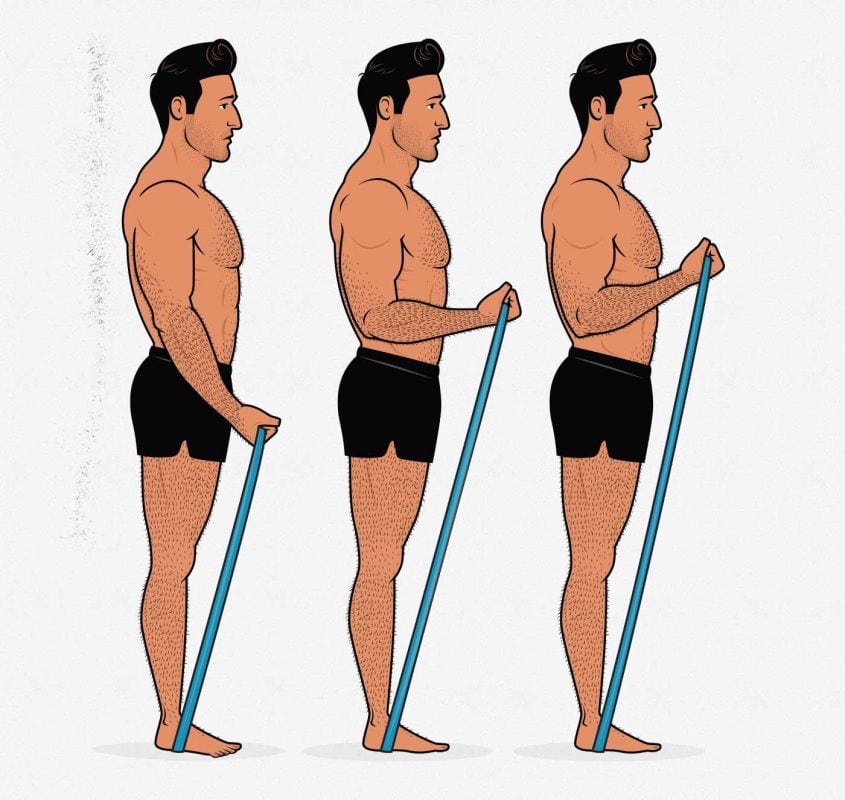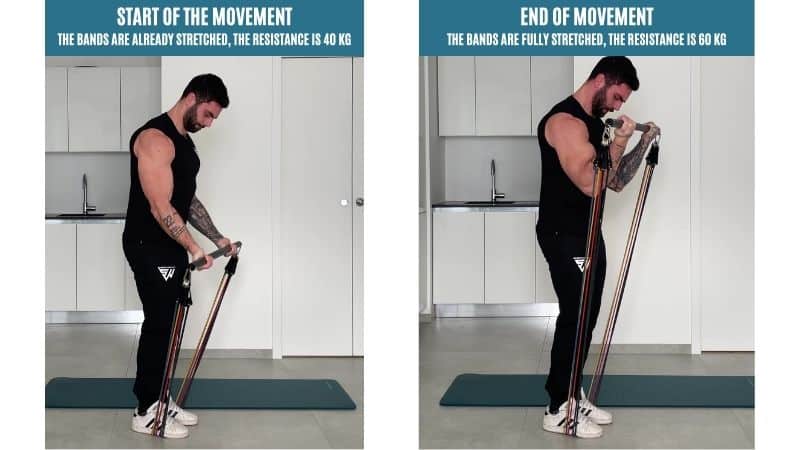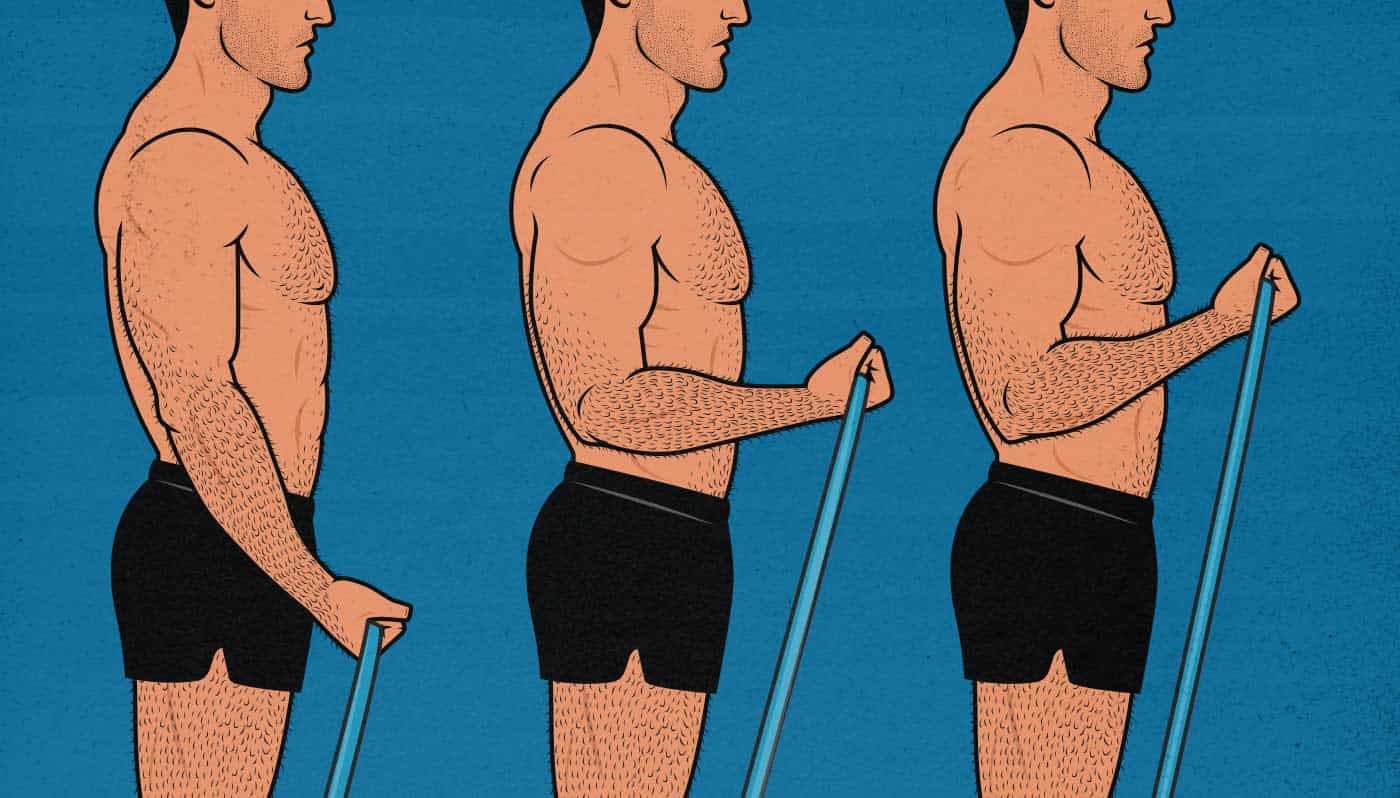resistance bands
Are resistance bands effective for muscle building?
Have you ever wondered if resistance bands are truly effective for muscle building? Well, look no further because this article will provide you with the answer you’ve been seeking. With the increasing popularity of resistance bands as a versatile tool for strength training, it’s important to understand their true potential in helping you achieve your muscle-building goals. Whether you’re a beginner or a seasoned fitness enthusiast, this article will explore the efficacy of resistance bands in building lean muscle mass and provide you with valuable insights to help enhance your workout routine. So, let’s get started and discover the power of resistance bands in sculpting your dream physique.

I. Understanding Resistance Bands
A. What are resistance bands?
Resistance bands are flexible bands made of elastic materials that can be used for strength training and muscle building. They come in a variety of lengths, thicknesses, and resistance levels, allowing individuals to perform a wide range of exercises to target different muscle groups.
B. How do resistance bands work?
Resistance bands work by providing external resistance to your muscles during exercises. When you stretch a resistance band, it creates tension that your muscles have to work against. This constant tension throughout the movement helps to stimulate muscle growth and strength development.
C. Types of resistance bands
There are three main types of resistance bands: loop bands, tube bands, and therapy bands. Loop bands are circular bands that can be placed around different body parts to target specific muscle groups. Tube bands consist of a handle on each end and can be used for a variety of exercises. Therapy bands are flat and wide, often used for rehabilitation purposes.
D. Benefits of using resistance bands
Using resistance bands for muscle building offers several advantages. Firstly, they provide a safer alternative to free weights as there is less risk of injury or dropping heavy objects. Resistance bands are also versatile and portable, making them convenient for home workouts or traveling. Additionally, they can be used for both strength training and rehabilitation exercises, making them suitable for individuals at different fitness levels.
II. Muscle Building Basics
A. What is muscle building?
Muscle building, also known as muscle hypertrophy, refers to the process of increasing the size and strength of your muscles through resistance training and proper nutrition. It involves breaking down muscle fibers during exercise and then allowing them to repair and grow stronger during rest periods.
B. How muscles grow
When you perform resistance training exercises, such as weightlifting or using resistance bands, your muscles experience microscopic damage. This damage stimulates the body to repair the muscle fibers, making them thicker and stronger. With consistent training and proper nutrition, this repair process leads to muscle growth.
C. Factors that contribute to muscle building
Several factors contribute to muscle building, including progressive overload, nutrition, and adequate rest. Progressive overload refers to gradually increasing the challenge placed on your muscles over time, whether it be through increasing weight, repetitions, or resistance level. Proper nutrition, especially adequate protein intake, provides the building blocks for muscle repair and growth. Finally, allowing sufficient rest and recovery time allows your muscles to repair and adapt to the training stimulus.
III. Effectiveness of Resistance Bands for Muscle Building
A. Research studies on resistance bands
Research studies have shown that resistance bands can be effective for muscle building. A study published in the Journal of Strength and Conditioning Research compared the muscle activation of various exercises using resistance bands and free weights. The results indicated similar muscle activation between the two training modalities, suggesting that resistance bands can provide a comparable stimulus for muscle growth.
B. Activation of muscle groups
Resistance bands have been found to activate multiple muscle groups simultaneously. For example, exercises like bicep curls with resistance bands not only target the biceps but also engage the muscles in your forearms and shoulders. This comprehensive muscle activation allows for efficient and effective muscle building.
C. Resistance bands vs. free weights
While free weights have long been considered the gold standard for muscle building, resistance bands offer unique advantages. Unlike free weights, resistance bands provide variable resistance throughout the entire range of motion, leading to constant tension on the muscles. This constant tension can better stimulate muscle fibers and result in greater muscle growth.
D. Progressive overload with resistance bands
Progressive overload, a key factor in muscle building, can be achieved with resistance bands. By gradually increasing the resistance level of the bands, using thicker or multiple bands, or increasing the repetitions, individuals can continue to challenge their muscles and promote continual muscle growth.
IV. Incorporating Resistance Bands into a Muscle Building Routine
A. Selecting the right resistance bands
To effectively incorporate resistance bands into your muscle building routine, it is important to select the right bands for your fitness level and goals. Resistance bands typically come in different colors, each representing a different level of resistance. Start with a band that provides enough resistance to challenge your muscles but allows you to maintain proper form and complete the desired number of repetitions.
B. Targeting specific muscle groups
Resistance bands can be used to target specific muscle groups in your body. By adjusting the band position, grip, or body positioning, you can effectively engage different muscles. For example, placing a resistance band around your thighs during squats can help target your glutes and quadriceps.
C. Sample resistance band exercises
There are numerous resistance band exercises that can be incorporated into your muscle building routine. Here are a few examples:
-
Resistance band bicep curls: Stand on the middle of a resistance band and hold the ends with your palms facing forward. Keeping your elbows close to your body, curl your hands toward your shoulders, and then slowly lower them back down.
-
Resistance band squats: Place a resistance band just above your knees and stand with your feet hip-width apart. Squat down by pushing your hips back and lowering your body, keeping tension on the band. Return to the starting position by pressing through your heels.
-
Resistance band shoulder presses: Stand on a resistance band, holding the ends at shoulder height with your palms facing forward. Extend your arms upwards, fully extending your elbows, and then lower them back down.
D. Combining resistance bands with other exercises
Resistance bands can be effectively combined with other exercises to enhance muscle building. For example, you can incorporate resistance band exercises into your weightlifting routine or use them as a warm-up or finisher to a strength training session. This combination allows for a more comprehensive workout that targets different muscle groups and promotes overall strength and muscle growth.

V. Safety and Precautions when Using Resistance Bands
A. Choosing the appropriate resistance level
When using resistance bands for muscle building, it is important to choose the appropriate resistance level. Starting with a resistance band that is too challenging can increase the risk of injury, while using a band with insufficient resistance may not effectively stimulate muscle growth. Gradually progress to higher resistance levels as your muscles adapt and become stronger.
B. Proper form and technique
Just like with any exercise, maintaining proper form and technique is crucial when using resistance bands. This helps to prevent injuries and ensures that the targeted muscles are being effectively engaged. Before starting a new exercise, familiarize yourself with the proper form and seek guidance from a qualified fitness professional if needed.
C. Warm-up and cooldown routines
Performing a proper warm-up and cooldown routine is essential when using resistance bands. A dynamic warm-up, such as marching in place or arm circles, helps increase blood flow, loosens up the muscles, and prepares the body for exercise. Similarly, a cooldown routine that includes static stretches can help improve flexibility and prevent muscle soreness.
D. Injury prevention tips
To reduce the risk of injuries when using resistance bands, consider the following tips:
- Inspect your resistance bands regularly for any signs of damage or wear and tear. Replace them if necessary.
- Use appropriate anchoring points or sturdy objects to secure the bands during exercises.
- Start with lighter resistance bands and gradually progress to higher resistance levels as your strength improves.
- Listen to your body and avoid overexertion or pushing through pain. If an exercise causes discomfort or pain, modify the movement or consult a healthcare professional.
VI. Tips for Maximizing Muscle Building with Resistance Bands
A. Varying resistance levels and exercises
To maximize muscle building with resistance bands, it is important to vary the resistance levels and exercises in your routine. Gradually increase the resistance as your muscles adapt and consider incorporating different exercises that target the same muscle groups from different angles or with different movement patterns.
B. Including resistance band training in a comprehensive workout plan
In order to effectively build muscle with resistance bands, it is beneficial to include them as part of a comprehensive workout plan. This plan should also include other forms of training, such as weightlifting or bodyweight exercises, to provide variety and ensure balanced muscle development.
C. Balancing resistance band exercises with other forms of training
While resistance bands can be effective for muscle building, it is important to balance their use with other forms of training. Incorporating exercises with free weights, machines, or bodyweight movements can provide different stimuli to your muscles and promote overall strength and muscle growth.
D. Monitoring progress and adjusting workouts
Tracking your progress and adjusting your workouts over time is essential for continuous muscle building. Keep a record of the resistance levels, repetitions, and sets you perform with resistance bands and make gradual adjustments as needed. This allows you to progressively overload your muscles and ensure ongoing progress.

VII. Success Stories and Testimonials
A. Personal experiences of individuals who built muscle with resistance bands
There are numerous personal success stories of individuals who have successfully built muscle using resistance bands. Many people have reported significant improvements in strength, muscle size, and overall physique after incorporating resistance bands into their training routine. These testimonials highlight the effectiveness and versatility of resistance bands for muscle building.
B. Expert opinions on the effectiveness of resistance bands for muscle building
Fitness experts and professionals across the industry have expressed positive opinions on the effectiveness of resistance bands for muscle building. They recognize that resistance bands can provide a challenging workout and stimulate muscle growth when used appropriately. These experts emphasize the importance of proper form, progressive overload, and incorporating resistance bands into a well-rounded fitness program.
VIII. Preconceived Myths and Misconceptions about Resistance Bands
A. Resistance bands lack resistance for muscle building
Contrary to the misconception that resistance bands lack sufficient resistance for muscle building, research and user experiences have shown that resistance bands can provide significant resistance when used correctly. By selecting the appropriate resistance level and progressively increasing it over time, resistance bands can effectively challenge and stimulate muscle growth.
B. Resistance bands are only suitable for rehabilitation or toning
While resistance bands are commonly used for rehabilitation purposes and toning exercises, they are not limited to these applications. When incorporated into a comprehensive strength training program with appropriate resistance levels, resistance bands can be an effective tool for muscle building.
C. Resistance bands are not as effective as traditional weightlifting
Resistance bands offer unique benefits that make them a valuable tool for muscle building. While traditional weightlifting with free weights or machines can certainly be effective, resistance bands provide constant tension throughout the entire range of motion, activate multiple muscle groups, and offer versatility. When used properly, resistance bands can be just as effective as traditional weightlifting for muscle building.
D. Resistance bands cannot provide progressive overload
Progressive overload, a fundamental principle of muscle building, can absolutely be achieved with resistance bands. By gradually increasing the resistance level or using thicker bands, individuals can continue to challenge their muscles and promote ongoing muscle growth. Resistance bands are a versatile tool that can be easily adjusted to provide progressive overload for effective muscle building.

IX. Conclusion
Resistance bands are indeed effective for muscle building when used properly and incorporated into a well-rounded fitness routine. With their versatility, portability, and ability to provide constant tension, resistance bands offer a safe and challenging way to stimulate muscle growth. By understanding the basics of muscle building, using appropriate resistance levels, and following proper form and technique, individuals can effectively build muscle and achieve their fitness goals with resistance bands. So, grab your resistance bands and get ready to experience the benefits of this valuable training tool on your muscle-building journey.




